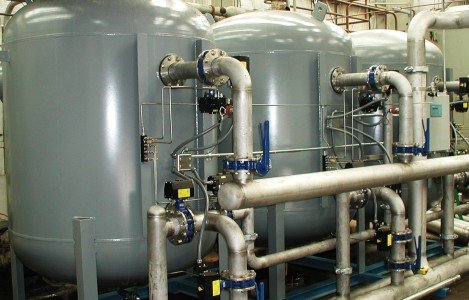
lignin-based water treatment
Lignin-Based Water Treatment: An Eco-Friendly Solution
Water is one of the most essential resources for life on Earth, yet access to clean and safe water is still a significant challenge for many communities around the world. Contaminants such as heavy metals, organic pollutants, and pathogens pose serious health risks when present in water sources. Traditional water treatment methods, such as chemical coagulation, filtration, and chlorination, are effective at removing these contaminants but often come with their own set of drawbacks, including high cost, the generation of toxic byproducts, and negative environmental impacts.
In recent years, researchers and engineers have been looking towards nature for inspiration in developing more sustainable and environmentally-friendly water treatment solutions. One such promising avenue is the use of lignin, a natural polymer found in plants, as a novel and effective water treatment agent. In this article, we will explore the properties of lignin, its potential applications in water treatment, and the current state of research in this field.
What is Lignin?
Lignin is a complex organic polymer that is the second most abundant natural polymer on Earth, surpassed only by cellulose. It is found in the cell walls of plants and provides structural support and rigidity to plant tissues. Lignin is composed of phenylpropane units linked by various types of covalent bonds, giving it a highly branched and irregular structure.
One of the key properties of lignin is its ability to bind to a wide range of organic and inorganic molecules through its aromatic rings and functional groups. This unique property makes lignin an attractive candidate for applications in water treatment, where the removal of various pollutants is crucial.
Lignin-Based Water Treatment Technologies
There are several ways in which lignin can be utilized for water treatment purposes. One of the most common methods is through the use of lignin-based adsorbents, which can effectively remove contaminants from water through physical adsorption, ion exchange, and chemical reactions. Lignin can also be modified or functionalized to enhance its adsorption capacity and selectivity towards specific pollutants.
Another promising approach is the use of lignin-derived nanoparticles for water treatment. These nanoparticles have a high surface area-to-volume ratio, which allows for efficient adsorption of contaminants. Additionally, the tunable surface properties of lignin nanoparticles enable the selective removal of target pollutants while minimizing the adsorption of harmless substances.
Furthermore, lignin can be used as a bioflocculant for the coagulation and flocculation of suspended particles in water. By forming large aggregates, lignin-based bioflocculants can facilitate the removal of turbidity and colloidal impurities from water, improving its clarity and quality.
In addition to its adsorption and flocculation capabilities, lignin has been explored for its potential use in membrane technologies for water treatment. Lignin-based membranes have shown promise in applications such as ultrafiltration, nanofiltration, and reverse osmosis, where they can effectively remove contaminants based on size, charge, and hydrophobicity.
Current Research and Applications
While the use of lignin in water treatment is still a relatively new and emerging field, there have been several promising developments in recent years. Researchers have successfully demonstrated the effectiveness of lignin-based adsorbents in removing a wide range of contaminants, including heavy metals, dyes, pharmaceuticals, and organic pollutants, from water.
In one study, lignin-derived carbon aerogels were shown to have a high adsorption capacity for arsenic, a toxic heavy metal commonly found in groundwater. The aerogels exhibited excellent adsorption kinetics and a low leaching of arsenic after adsorption, making them a sustainable and eco-friendly alternative to conventional adsorbents.
Another research group developed lignin-based magnetic nanoparticles for the removal of organic dyes from wastewater. The nanoparticles were surface-functionalized with amino groups to enhance their adsorption affinity towards the dyes, resulting in efficient removal and separation of the contaminants from water.
Furthermore, lignin-based bioflocculants have been utilized in the treatment of industrial wastewater, such as paper mill effluents and textile dyeing wastewater. The bioflocculants were able to effectively agglomerate and settle suspended particles, leading to the clarification of the wastewater and the reduction of pollutant levels.
In membrane technologies, lignin has been incorporated into composite membranes for improved fouling resistance and enhanced water permeability. These membranes have shown great potential in desalination processes, where the removal of salt and other impurities from seawater is essential for freshwater production.
Challenges and Future Directions
While lignin-based water treatment technologies show great promise, there are still challenges that need to be addressed for their widespread implementation. One of the main challenges is the scalability of lignin production and the cost-effectiveness of its utilization in water treatment processes. Current methods of lignin extraction from biomass are energy-intensive and often result in low yields, making it necessary to develop more efficient and sustainable production methods.
Another challenge is the optimization of lignin-based materials for specific water treatment applications. The performance of lignin adsorbents, bioflocculants, and membranes can be influenced by factors such as lignin source, pretreatment methods, and functionalization strategies. Further research is needed to tailor lignin-based materials to target contaminants and improve their efficacy in removing them from water.
Additionally, the environmental impact of lignin-based water treatment technologies must be carefully considered. While lignin is a natural and biodegradable polymer, its long-term fate in the environment and potential effects on ecosystems need to be thoroughly assessed. Studies on the leaching of lignin residues and degradation products from adsorbents and membranes are essential to ensure the safety and sustainability of these technologies.
Despite these challenges, lignin-based water treatment technologies hold great promise as sustainable and eco-friendly solutions for addressing water pollution. By harnessing the unique properties of lignin, researchers and engineers can develop innovative and effective methods for removing contaminants from water sources, ensuring access to clean and safe water for all. As the field continues to advance, it is hoped that lignin-based water treatment technologies will play a crucial role in safeguarding water resources and protecting human health and the environment.

